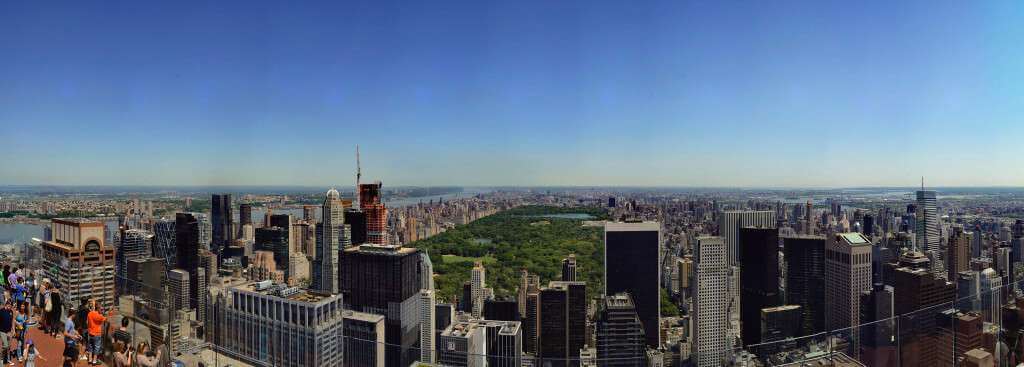
STR analysts examined the impact of Airbnb on the New York City hotel market during holidays and popular events, including the New York City Marathon, Super Bowl XLVIII and Pope Francis’ September 2015 visit.
These nights are important for hotels because they lead to high occupancy and drive rate premiums. STR examined the most impactful events in the New York market to determine how Airbnb affected the city’s hotels at the time.
The results reveal a mixed picture, as hotels achieved significant occupancy and rate gains during some events, but recorded slight declines during other events. While it is likely that some demand is moving to Airbnb, the data implies that Airbnb is likely adding demand as well, particularly to the New York boroughs that have a smaller hotel presence. The following sections review the key findings for each event. For an event summary comparison of hotels and Airbnb, see the tables at the end of this article.
This analysis considered only Airbnb’s statistics for private rooms and entire homes, as they are assumed to be most comparable to the typical hotel room.
The largest increases in Airbnb supply and demand occur during events. Interestingly, a large increase in supply does not always correspond to an equivalent spike in demand. It would appear that many hosts list their units while they are away during holidays; however, many stay vacant.
Holiday season (Christmas and New Year’s Eve)
As indicated in the first chart, the most noticeable spike in Airbnb supply and demand occurs during the Christmas and New Year holidays.
Hotel and Airbnb occupancy followed a similar pattern over the holiday seasons of 2013 (not shown) and 2014. During both years, hotel occupancy increased during Christmas and the subsequent days, followed by a few days of lower occupancy and then an increase again on New Year’s Eve.
Airbnb occupancy gradually increased from Christmas through New Year’s Eve, with no lag time between the two holidays. This is likely due to Airbnb’s longer length of stay, as discussed in Part One of STR’s analysis.
Hotel occupancy growth was around 1% higher than Airbnb on Christmas Day and New Year’s Eve.
Hotel rate followed demand with higher rates achieved around Christmas, followed by slightly lower rates and then another significant increase around New Year’s Eve. In contrast, Airbnb rates remained more consistent throughout the holiday season.
On Christmas Day 2014, the average hotel rate was $47 higher than Airbnb, which was the smallest variance in pricing of any event examined.
Conversely, the largest average-daily-rate difference between hotels and Airbnb occurred during New Year’s Eve 2014. Hotel ADR was $457, which was $276 higher than Airbnb’s ADR.
Although hotel occupancy increased on Christmas Day and New Year’s Eve, hoteliers might have felt the pressure of additional supply in the market from both hotels and Airbnb, because rates dropped slightly during both holidays.
Thanksgiving
The second largest spike in Airbnb supply occurs during Thanksgiving. In 2015, hotel occupancy over Thanksgiving weekend was down 2% from the previous year, while Airbnb occupancy growth was up 25%. A range of growth was felt across all boroughs, as occupancy grew 16% in Staten Island and 25% in Manhattan.
ADR for both hotels and Airbnb was down more than 3% during Thanksgiving weekend. With a 2015 ADR of $268.88, hotels charged $114 more than Airbnb hosts. Interestingly, Staten Island hotels and Airbnb units both saw robust rate growth of 10% and 6%, respectively.
Over the last couple Thanksgiving holidays, hotel occupancy and rate have been stagnant in the New York City market, which could point to hoteliers reacting to market forces and new supply coming from hotels and Airbnb.
Independence Day
There is also a noticeable spike in Airbnb supply during Independence Day weekend. Hotel occupancy for the 2015 holiday was 86.8%, up 3.4% over 2014. During the same time, Airbnb occupancy for Independence Day in 2015 increased 15.4% from the previous year, reaching 45.9% in absolute occupancy. The most notable occupancy growth for Airbnb was again in Staten Island, which had occupancy growth of 36%, while hotel occupancy decreased 15% in that borough.
Hotel rates during Independence Day weekend in 2015 were the lowest of any event analyzed at $209.42, with flat growth year-over-year. Airbnb ADR was up slightly over 2014 to $150.49.
While hotel occupancy during Independence Day remains healthy, there’s no denying that Airbnb occupancy is growing across all boroughs. Because this holiday had the lowest hotel rate of any event analyzed and rate growth has been flat the last couple years, this could indicate that the presence of new hotel and Airbnb supply is making it more difficult to raise rates. Or, it could mean that Independence Day brings a more price-sensitive customer to the market and Airbnb has been able to capitalize on this with its lower rates.
Fashion Week and Valentine’s Day
Fashion Week is held every February and September and brings about 120,000 people to New York City. In February 2015, Fashion Week coincided with Valentine’s Day, resulting in the largest occupancy growth for both hotels and Airbnb of any event examined. Hotel occupancy grew 16% over 2014 to 83.9%. Airbnb realized occupancy growth of 51.9%, as 2015 absolute occupancy climbed to 27.9%.










